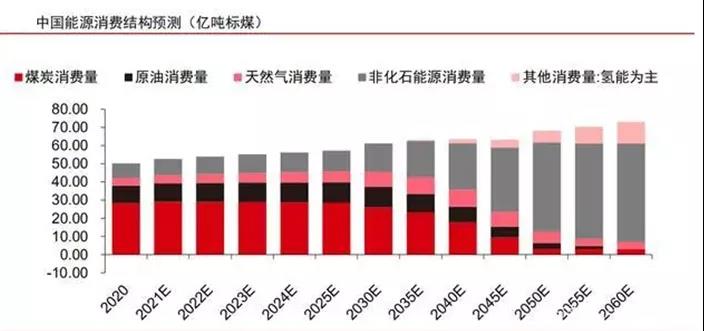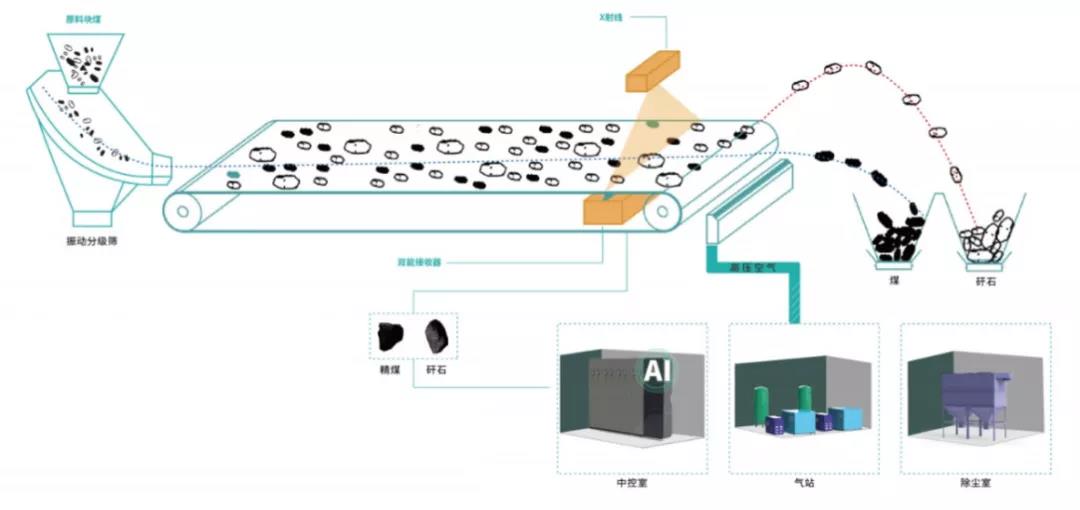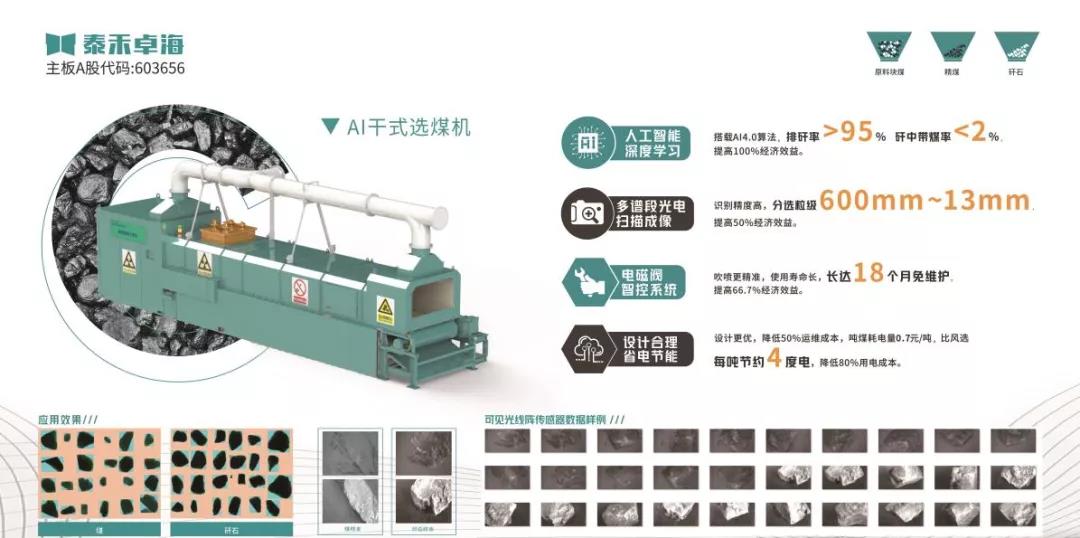Practicing Carbon Neutrality Taihe Juhai Intelligence Helps Green Mine Development
Release Date:2021-06-21 Source: Number of views:1604
On September 22, 2020, the seventy-fifth session of the United Nations General Assembly proposed that China's carbon dioxide emissions should strive to peak by 2030, and that efforts should be made to achieve carbon neutrality by 2060.

Carbon neutrality means offsetting carbon dioxide emissions and realizing "zero emissions" through energy saving and technological innovation. According to statistics, in 2019, China's carbon emissions will total 11.3 billion tons, and the energy sector will emit 9.8 billion tons of carbon, accounting for 87% of the national total. Therefore, the energy sector has the heaviest task and the greatest responsibility to achieve carbon peak and carbon neutrality, and will assume the role of the main force.

Therefore, the commitment made at the seventy-fifth session of the United Nations General Assembly not only implies that our country's determination to make a low-carbon transition from the Fourteenth Five-Year Plan remains unchanged and that we will continue to realize the decoupling of economic development and carbon emissions, but also implies that the Government has full confidence in the competitiveness and technological development of China's industries in realizing the energy transition. This is a strategic decision made by our country after considering both national interests and the international situation, as well as high-quality economic and social development and high-level protection of the ecological environment, which will bring historic opportunities for China's sustainable development.

This goal will achieve a revolution in China's energy sector, which will not only reshape the country's energy mix, but also have a positive impact on the economy, bringing about a digital transformation and the spread of intelligent applications in power, transportation and other industries. It is a further step in the idea of realizing the strategic goal of energy revolution under Beautiful China. Artificial Intelligence as the coreTaiho practicing carbon emission reduction exploration Coal is the main fuel and raw material of China's industry, for a long time, coal in China's energy structure accounted for nearly 70%, becoming an important reason for the high level of China's industrial carbon emissions. Under the trend of digital economy, Taihe Intelligence, by comprehensively building the interconnection of people, machines and things, relying on artificial intelligence machine vision technology and deep learning algorithms, discovers a new balance between productivity enhancement and environmental friendliness, and provides an effective solution for the field of coal mining, which improves the utilization rate of coal, enhances the energy efficiency of production management, reduces the consumption of resources and negative impact on the environment, and pushes the carbon emission reduction work to a and help realize the goal of carbon neutrality.

Taihe Zhuo Hai independent research and development, set mechanization, automation, intelligence in one of the intelligent coal sorting equipment (PIDS) application as an example. The natural attribute of high carbon of coal can not be changed, but through PIDS by AI image recognition technology to collect raw coal information, and the impurities and other impurities in which the precise blowing rejection processing, can realize the separation of useful coal and gangue. Compared with the traditional coal washing method, PIDS can save 2 degrees of electricity for each ton of raw coal processed. According to experts' statistics, each saving of 1 kWh of electricity can reduce the emission of 0.997 kg of carbon dioxide. Taking the example of a coal mine with 12Mt/a, 300-25mm grain size accounting for 30% of the total grain size, the use of PIDS dry coal beneficiation equipment can save 7.2 million kWh of electricity per year. According to the "2013 analysis of the current situation of the domestic coal processing industry" shows that the proportion of wind selection in various coal selection methods accounted for about 5%, from the perspective of emission reduction, the value of replacing the traditional wind selection method with PIDS is self-evident. In addition, compared with the way of cleaning raw coal by adding water to the medium (after dewatering, the water in the coal remains about 5%), the calorific value of each kilogram of coal processed by PIDS can be increased by about 400 kcal, which means that PIDS can greatly improve the utilization rate of coal energy, and become an important hand for energy saving and emission reduction on the demand side of thermal power and other high energy-consuming industries.

In addition, Taiho's cutting-edge technologies in ore extraction and resource recovery have entered into large-scale application, and the promotion and application of these new solutions will help optimize the overall allocation of resources and ultimately point to the goal of "carbon neutrality".
On September 22, 2020, the seventy-fifth session of the United Nations General Assembly proposed that China's carbon dioxide emissions should strive to peak by 2030, and that efforts should be made to achieve carbon neutrality by 2060.

Carbon neutrality means offsetting carbon dioxide emissions and realizing "zero emissions" through energy saving and technological innovation. According to statistics, in 2019, China's carbon emissions will total 11.3 billion tons, and the energy sector will emit 9.8 billion tons of carbon, accounting for 87% of the national total. Therefore, the energy sector has the heaviest task and the greatest responsibility to achieve carbon peak and carbon neutrality, and will assume the role of the main force.

Therefore, the commitment made at the seventy-fifth session of the United Nations General Assembly not only implies that our country's determination to make a low-carbon transition from the Fourteenth Five-Year Plan remains unchanged and that we will continue to realize the decoupling of economic development and carbon emissions, but also implies that the Government has full confidence in the competitiveness and technological development of China's industries in realizing the energy transition. This is a strategic decision made by our country after considering both national interests and the international situation, as well as high-quality economic and social development and high-level protection of the ecological environment, which will bring historic opportunities for China's sustainable development.

This goal will achieve a revolution in China's energy sector, which will not only reshape the country's energy mix, but also have a positive impact on the economy, bringing about a digital transformation and the spread of intelligent applications in power, transportation and other industries. It is a further step in the idea of realizing the strategic goal of energy revolution under Beautiful China. Artificial Intelligence as the coreTaiho practicing carbon emission reduction exploration Coal is the main fuel and raw material of China's industry, for a long time, coal in China's energy structure accounted for nearly 70%, becoming an important reason for the high level of China's industrial carbon emissions. Under the trend of digital economy, Taihe Intelligence, by comprehensively building the interconnection of people, machines and things, relying on artificial intelligence machine vision technology and deep learning algorithms, discovers a new balance between productivity enhancement and environmental friendliness, and provides an effective solution for the field of coal mining, which improves the utilization rate of coal, enhances the energy efficiency of production management, reduces the consumption of resources and negative impact on the environment, and pushes the carbon emission reduction work to a and help realize the goal of carbon neutrality.

Taihe Zhuo Hai independent research and development, set mechanization, automation, intelligence in one of the intelligent coal sorting equipment (PIDS) application as an example. The natural attribute of high carbon of coal can not be changed, but through PIDS by AI image recognition technology to collect raw coal information, and the impurities and other impurities in which the precise blowing rejection processing, can realize the separation of useful coal and gangue. Compared with the traditional coal washing method, PIDS can save 2 degrees of electricity for each ton of raw coal processed. According to experts' statistics, each saving of 1 kWh of electricity can reduce the emission of 0.997 kg of carbon dioxide. Taking the example of a coal mine with 12Mt/a, 300-25mm grain size accounting for 30% of the total grain size, the use of PIDS dry coal beneficiation equipment can save 7.2 million kWh of electricity per year. According to the "2013 analysis of the current situation of the domestic coal processing industry" shows that the proportion of wind selection in various coal selection methods accounted for about 5%, from the perspective of emission reduction, the value of replacing the traditional wind selection method with PIDS is self-evident. In addition, compared with the way of cleaning raw coal by adding water to the medium (after dewatering, the water in the coal remains about 5%), the calorific value of each kilogram of coal processed by PIDS can be increased by about 400 kcal, which means that PIDS can greatly improve the utilization rate of coal energy, and become an important hand for energy saving and emission reduction on the demand side of thermal power and other high energy-consuming industries.

In addition, Taiho's cutting-edge technologies in ore extraction and resource recovery have entered into large-scale application, and the promotion and application of these new solutions will help optimize the overall allocation of resources and ultimately point to the goal of "carbon neutrality".



























